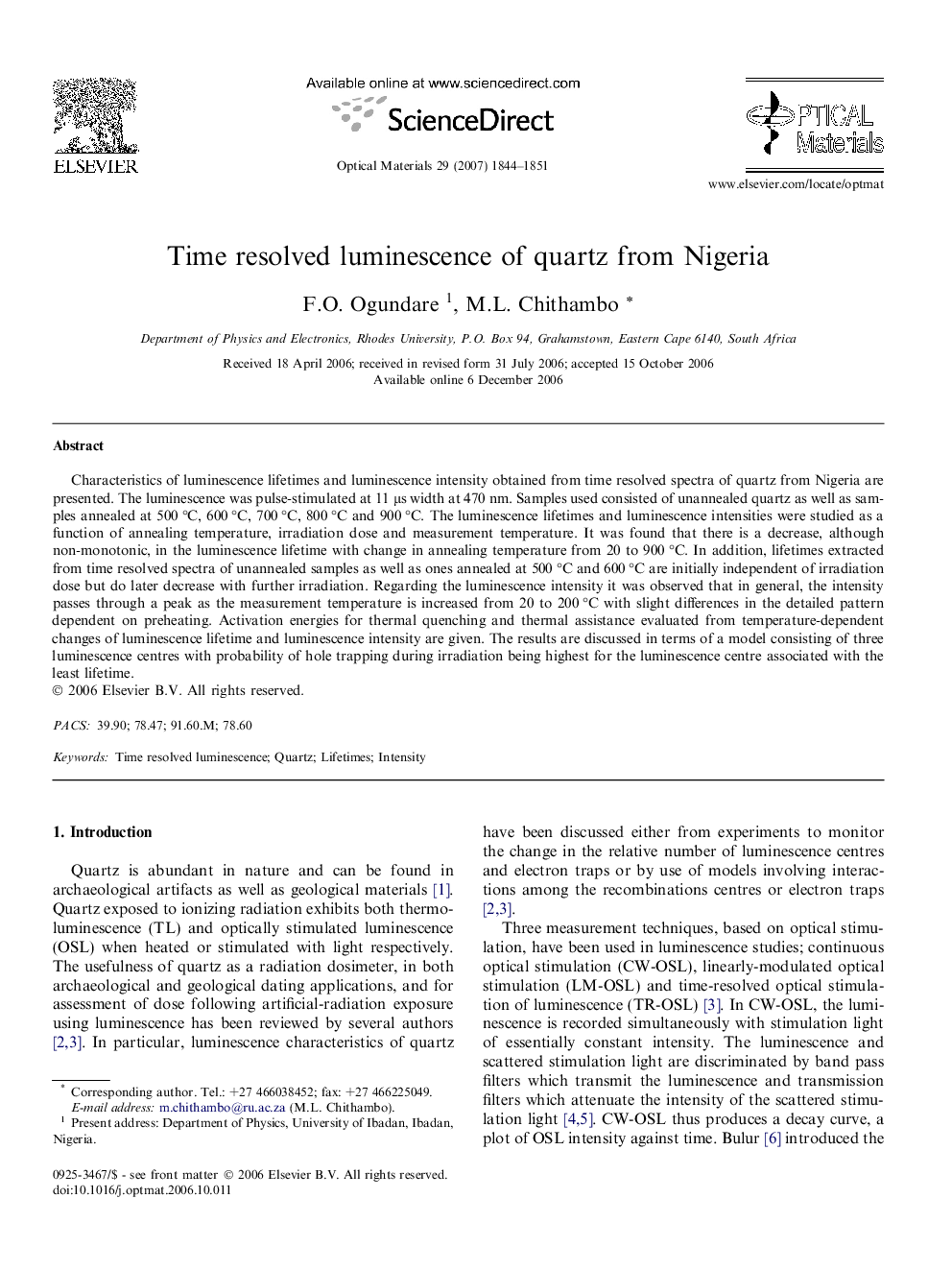| Article ID | Journal | Published Year | Pages | File Type |
|---|---|---|---|---|
| 1496857 | Optical Materials | 2007 | 8 Pages |
Abstract
Characteristics of luminescence lifetimes and luminescence intensity obtained from time resolved spectra of quartz from Nigeria are presented. The luminescence was pulse-stimulated at 11 μs width at 470 nm. Samples used consisted of unannealed quartz as well as samples annealed at 500 °C, 600 °C, 700 °C, 800 °C and 900 °C. The luminescence lifetimes and luminescence intensities were studied as a function of annealing temperature, irradiation dose and measurement temperature. It was found that there is a decrease, although non-monotonic, in the luminescence lifetime with change in annealing temperature from 20 to 900 °C. In addition, lifetimes extracted from time resolved spectra of unannealed samples as well as ones annealed at 500 °C and 600 °C are initially independent of irradiation dose but do later decrease with further irradiation. Regarding the luminescence intensity it was observed that in general, the intensity passes through a peak as the measurement temperature is increased from 20 to 200 °C with slight differences in the detailed pattern dependent on preheating. Activation energies for thermal quenching and thermal assistance evaluated from temperature-dependent changes of luminescence lifetime and luminescence intensity are given. The results are discussed in terms of a model consisting of three luminescence centres with probability of hole trapping during irradiation being highest for the luminescence centre associated with the least lifetime.
Related Topics
Physical Sciences and Engineering
Materials Science
Ceramics and Composites
Authors
F.O. Ogundare, M.L. Chithambo,
